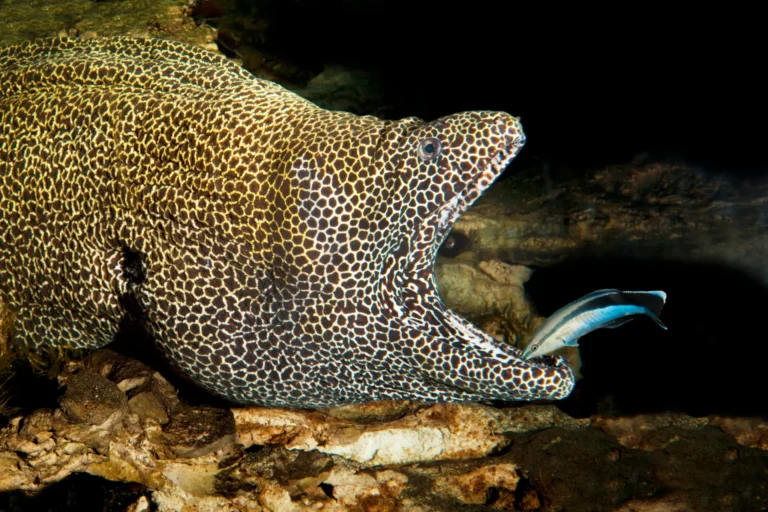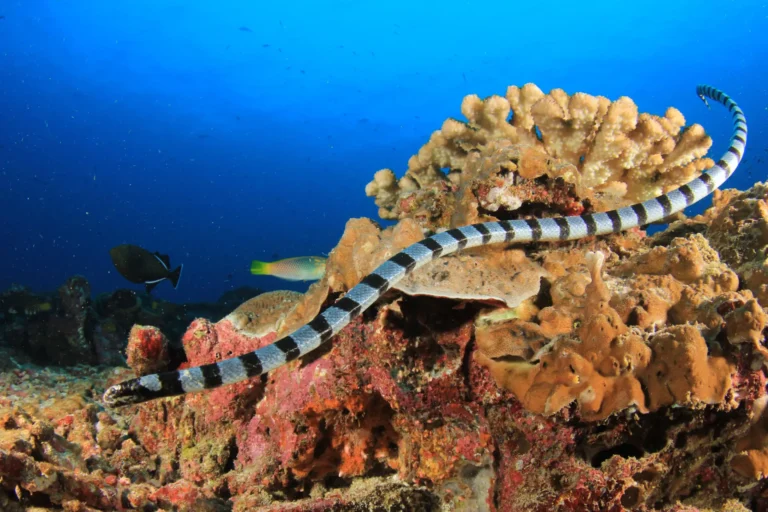Debunking Myths About the Moray Eels of Bohol
There are few creatures on the reef that evoke such a primal mix of fascination and fear as the moray eel. Peeking out from a dark crevice, its powerful head swaying gently, its mouth rhythmically opening and closing to reveal a set of sharp teeth—it’s an image straight out of a sea monster legend. They are often cast as the villains of the underwater world, lurking in the shadows, ready to strike.
But what if we told you that this fearsome reputation is almost entirely undeserved?
Here at Sierra Madre Divers, our experienced guides know the true nature of these incredible animals. They are not the aggressive monsters of folklore, but shy, reclusive, and vital members of Bohol’s reef ecosystem. It’s time to separate fact from fiction and debunk the common myths surrounding the moray eels you’ll meet in our waters.
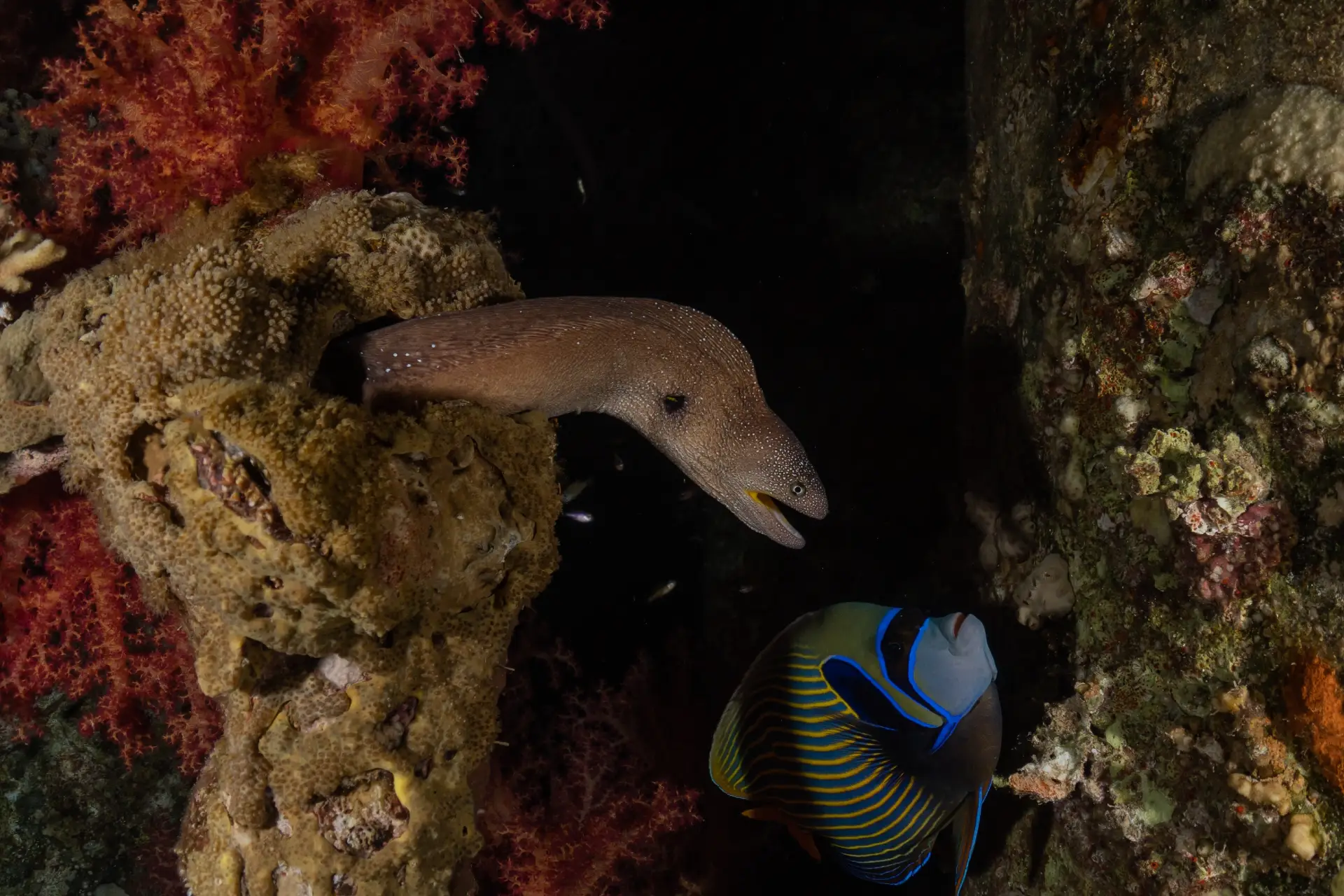
Myth #1: The constant opening and closing of their mouth is a threat.
The Reality: This is, without a doubt, the single biggest misunderstanding about moray eels. When a diver sees an eel rhythmically opening and closing its mouth, it’s easy to interpret this as a display of aggression, like a dog baring its teeth.
In truth, the eel is simply breathing.
Unlike most fish that can actively pump water over their gills by opening their gill covers, moray eels have small, restricted gill openings. To get a fresh supply of oxygenated water, they must constantly use their mouth to actively gulp water and pump it back over their gills. This “gaping” motion is the eel’s natural, relaxed state of respiration. It’s not a threat; it’s a sign that the eel is calm and comfortable in its den.
Myth #2: Moray eels are aggressive and will attack divers without provocation.
The Reality: Moray eels are incredibly shy and reclusive. Their entire strategy for survival is to find a safe, dark hole and stay there, avoiding conflict. They have notoriously poor eyesight and rely more on their acute sense of smell to hunt for prey, which they do mostly at night.
Virtually all of the very rare incidents involving a moray eel bite are defensive, not aggressive. They happen when a diver inadvertently puts a hand into a crevice that an eel calls home, or in the context of spearfishing or, regrettably, hand-feeding (something we strictly prohibit). An eel in its hole, feeling threatened and cornered with no escape route, will defend itself.
When you encounter an eel on a dive, as long as you keep a respectful distance and never put your hands into holes in the reef, the eel poses no threat to you. They will simply watch you with curiosity before retreating further into their den.
Myth #3: Moray eels have venomous bites.
The Reality: This is a common and completely false myth. Moray eels are not venomous. They do not inject any venom when they bite. However, their mouths do contain a lot of bacteria, and their sharp, backward-curving teeth are designed to hold onto struggling prey. A defensive bite can therefore be severe and prone to infection, which is another excellent reason to always respect their space. Some species may have a mild toxic slime on their skin as a defense mechanism, but the bite itself is not venomous.
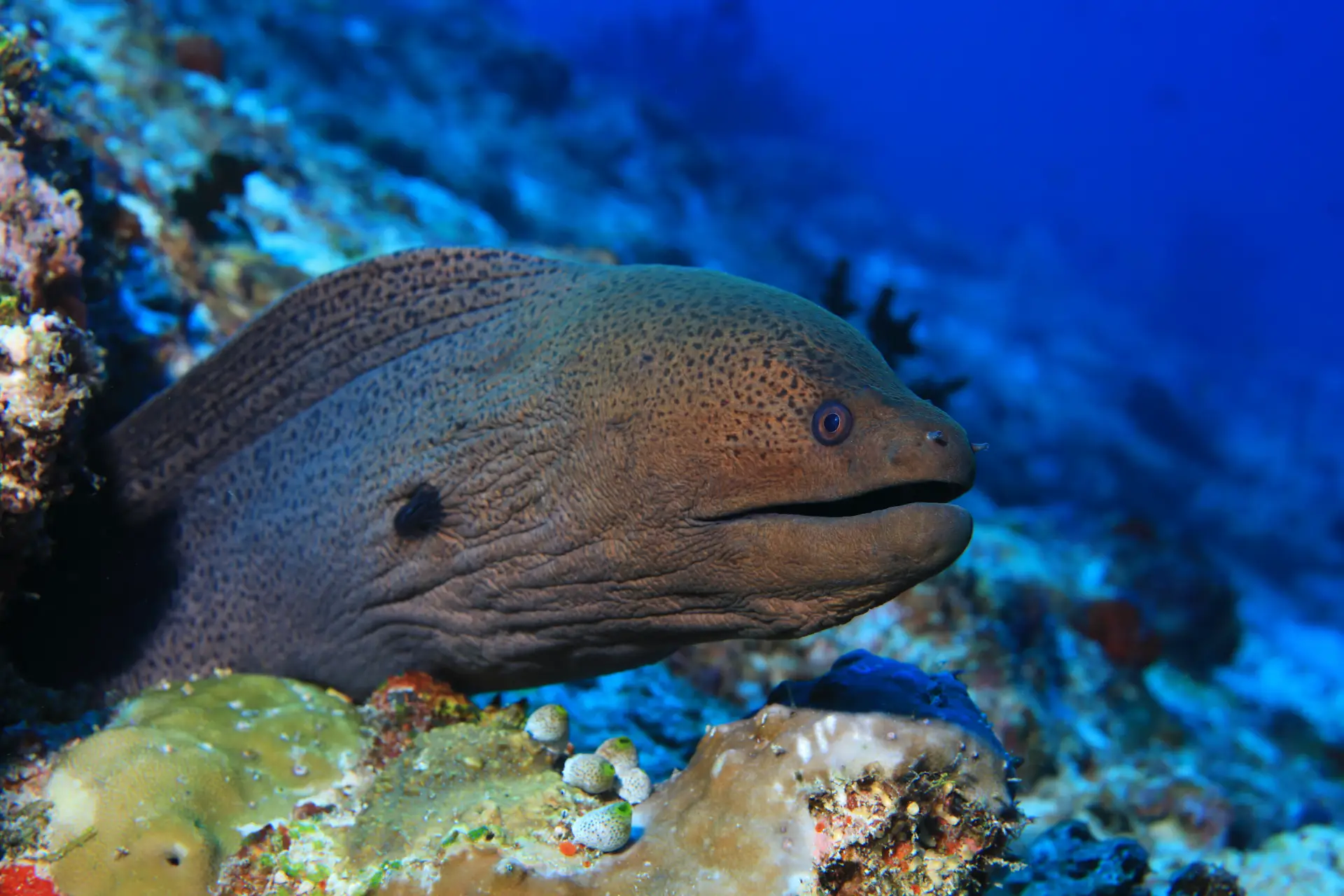
Meet the Morays of Bohol: A Diverse Family
Bohol’s healthy reefs are the perfect home for a wide variety of moray species. Keep an eye out for these amazing residents on your dives with us:
- The Giant Moray (Gymnothorax javanicus): The largest of the morays, these behemoths can grow up to 3 meters (10 feet) long! With their leopard-like spots and impressive size, they are a truly awesome sight.
- The Snowflake Moray (Echidna nebulosa): A beautiful, smaller moray with a white body covered in intricate, snowflake-like patterns of black and yellow. Unlike other morays, they have blunt, molar-like teeth, perfect for crushing their favourite food: crustaceans.
- The White-eyed Moray (Gymnothorax thyrsoideus): One of the most common eels you’ll see, often identifiable by its pale, almost white eyes. You can frequently find several of them sharing the same den, their heads peeking out together.
- The Ribbon Eel (Rhinomuraena quaesita): A true jewel of the reef and a bucket-list find for many divers. These incredibly slender eels are famous for their vibrant colours and their unique, flared nostrils. Juveniles are jet black, adult males are a brilliant electric blue, and as they age, they can transition into a yellow female. They are a rare and magnificent sight.
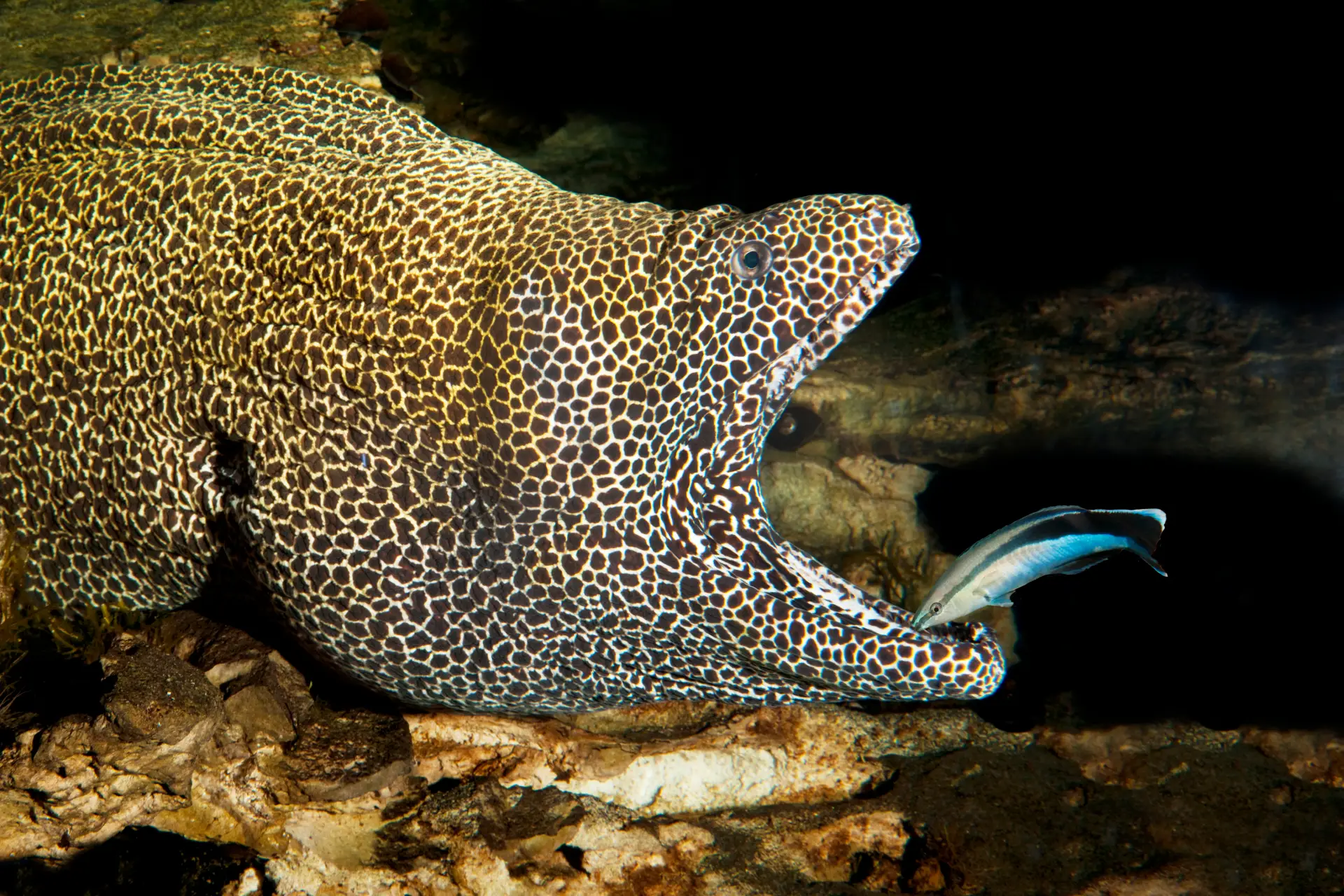
The Moray’s Best Friend: The Cleaner Shrimp
One of the most wonderful behaviours to witness on the reef is the symbiotic relationship between moray eels and cleaner shrimp. You will often see a large moray with one or more brave cleaner shrimp crawling all over its head and even inside its mouth.
This is a classic cleaning station relationship. The shrimp gets a full meal by eating parasites and dead skin off the eel’s body, and in return, the moray gets a thorough and vital cleaning that keeps it healthy. This is the ultimate display of trust on the reef and a perfect illustration of the moray’s true, non-aggressive nature.
How to Be a Five-Star Eel Observer
Ready to appreciate these amazing animals? Here’s how to do it right:
- Go Slow and Look Closely: Morays are masters of hiding. Swim slowly along the reef wall and peer into all the nooks, crannies, and crevices.
- Keep Your Distance: Once you find an eel, maintain a respectful distance. Don’t crowd it or shine your torch directly in its eyes for extended periods.
- Hands Off the Reef: This is the most important rule. Never, ever put your hands into a hole in the reef. You never know who might be at home.
- Trust Your Guide: Our guides at Sierra Madre Divers are experts at finding morays and can show you how to observe them in a way that is safe for both you and the eel.
Moray eels are not the villains they are made out to be. They are fascinating, essential predators that play a crucial role in the health of Bohol’s reefs. By understanding their true nature, we can replace fear with fascination and appreciate them for the shy, beautiful creatures they really are.

